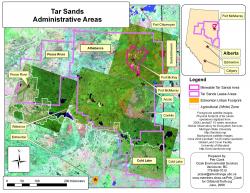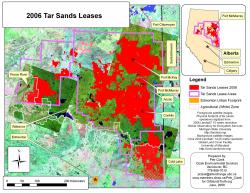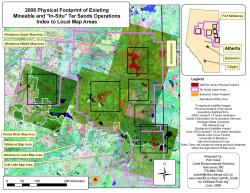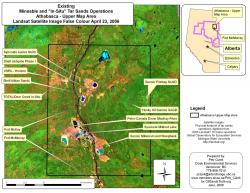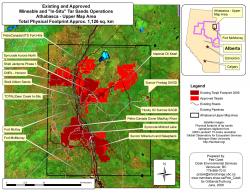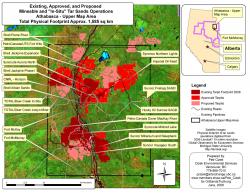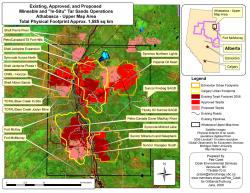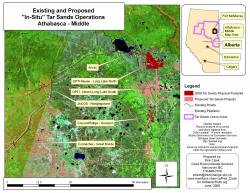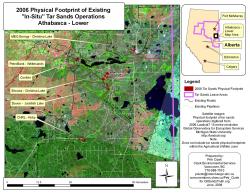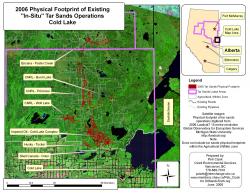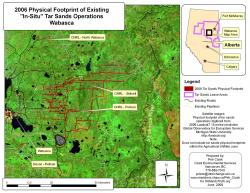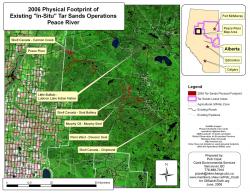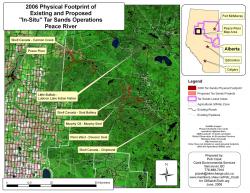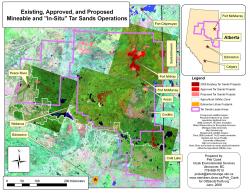The purpose of these maps is to show all existing development related to tar sands throughout Alberta for the first time. Many of the maps also include approved and/or proposed industrial development. It is likely that no authorities want to see all of the proposed development gathered in one place for others to see, interpret and be able to react to accordingly. Consequently there are no such government provided map sources.
These maps are designed to give a total accounting of the pace, scope and scale of industrial development across tar sands regions throughout Alberta. These maps use industry and government figures and projections for existing, approved and/or proposed footprints in all tar sands lease regions. The goal of these maps is to visually conceptualize the speed of existing development and also to illustrate the vast expansion of the In-Situ (or "Steam Assisted Gravity Drainage"-- Sag-D) systems that make up the vast majority of the Albertan Tar Sands Reserves. In-Situ projects consume about twice as much natural gas and water than the open pit tar sands mining operations. In some cases, In-Situ operates on much more dubious forms of energy-- such as burning "asphaltene" (a bitumen waste) and emitting far more greenhouse gases than natural gas.
The In-Situ footprint maps do not show the increase in greenhouse gases, use of water (and attendant damage to water systems) nor the damage to lands immediately adjoining the mapped/hi-lighted areas. The overwhelming bulk of the landscape in and around the In-Situ developments are cleared completely (or close to) of forest cover and similar natural systems. In an area where one would find conventional oil using a "regular" pump jack, In-Situ operations can have up to a dozen Sag-D platforms-- with one set of pipes for injecting steam and the other set for extracting bitumen. In short, In-Situ is not a "better alternative" to the vast strip mines north of Fort McMurray.
These maps are intended to provide a starting point for a discussion of what it may sufficiently take to stop the destruction being wrought by development of the "Tar Sands Gigaproject". A longer essay on the same is provided here, under the title: Discussion Points on a Moratorium: No New Approvals-- of what?
